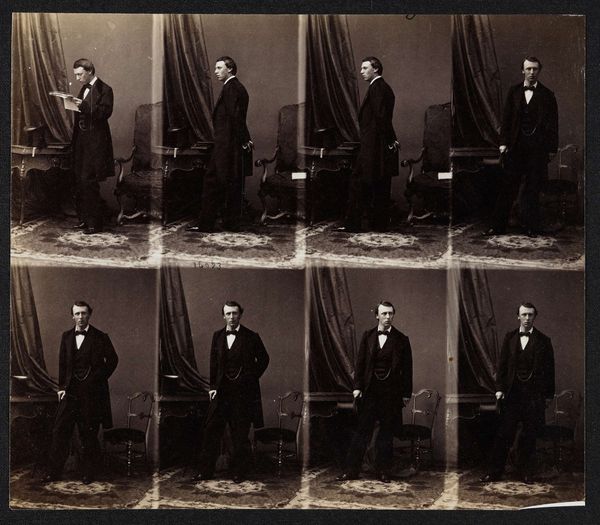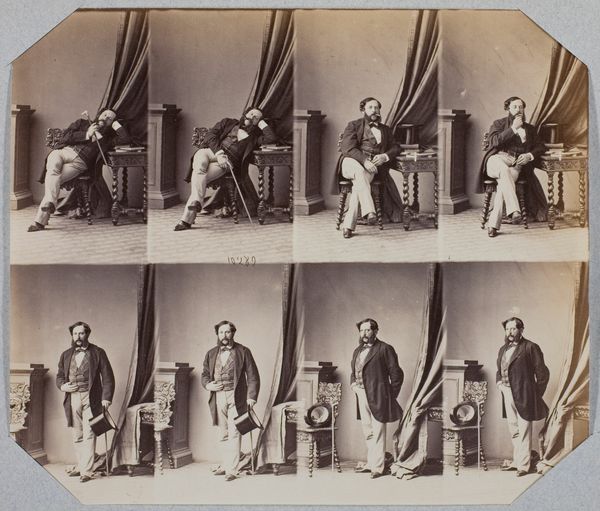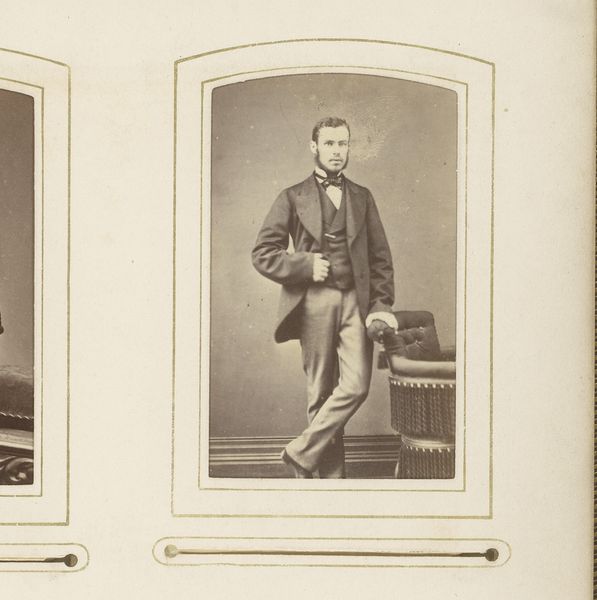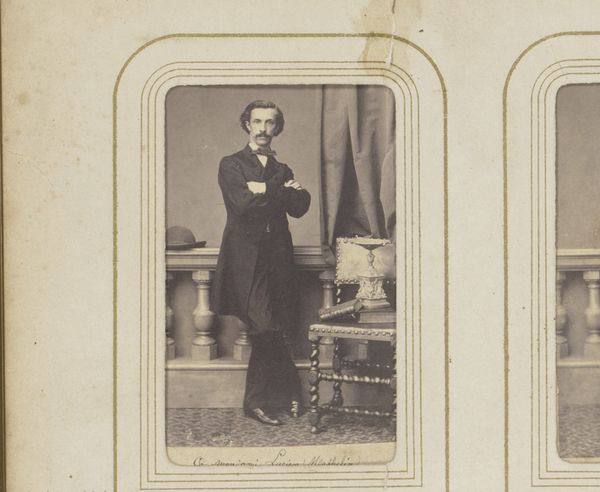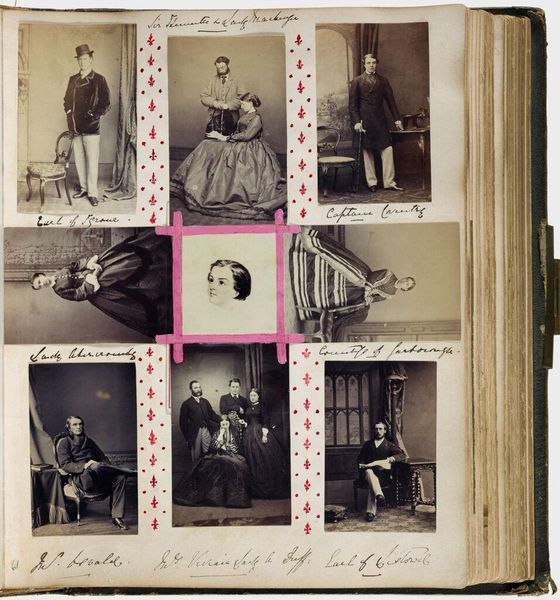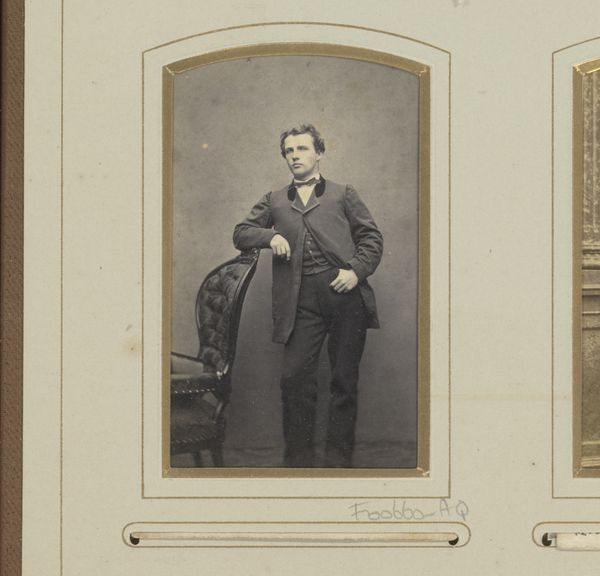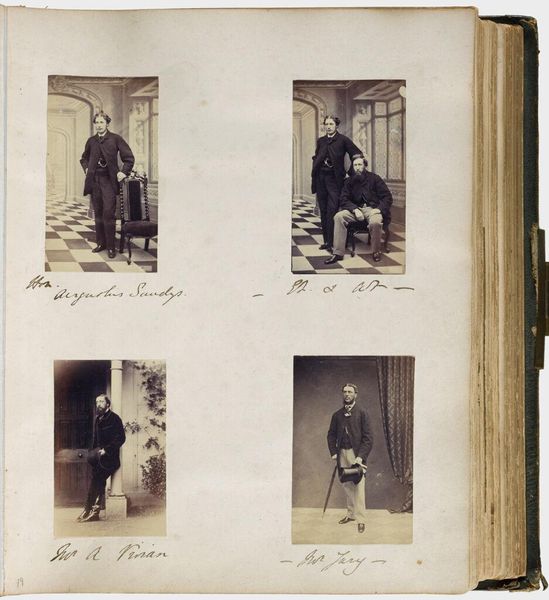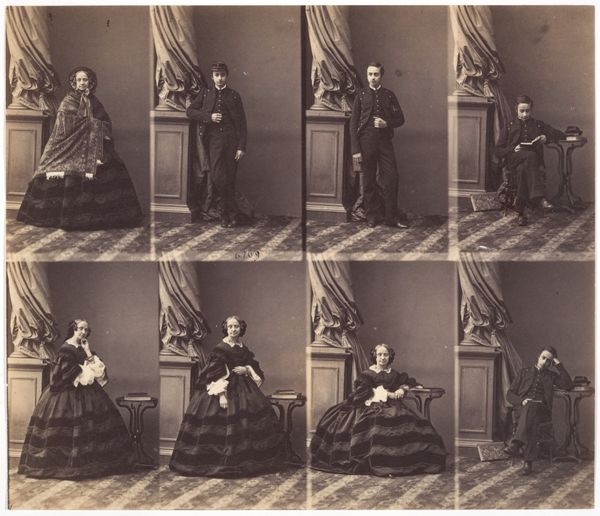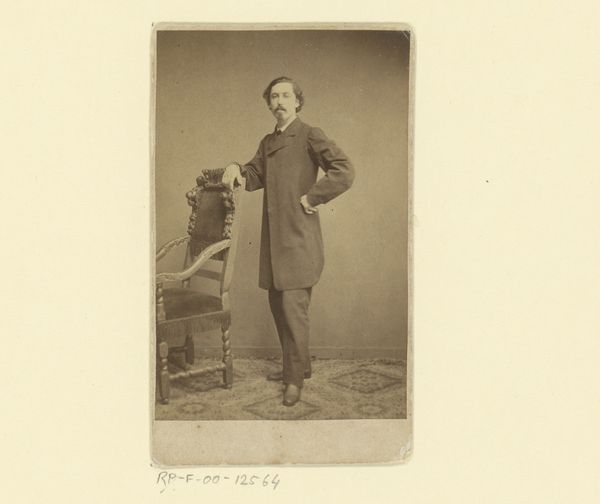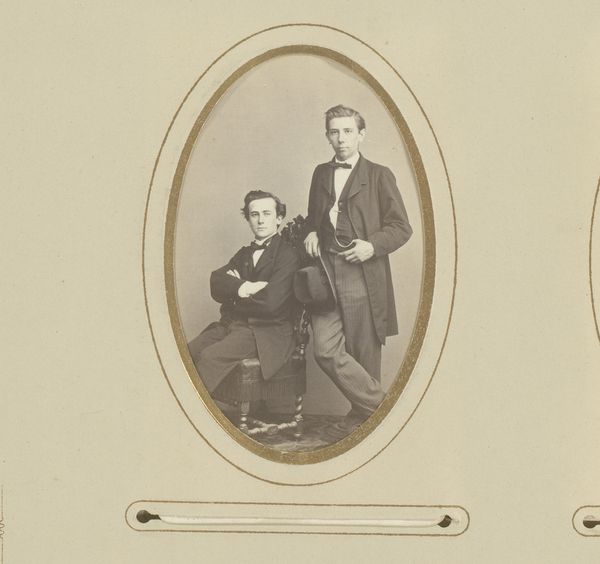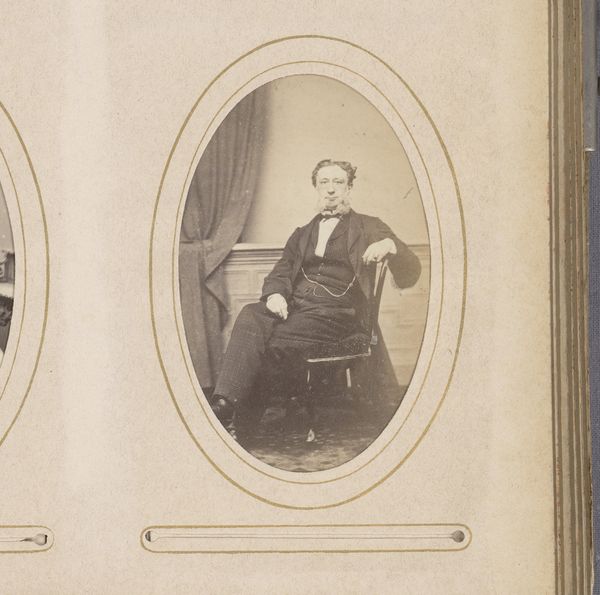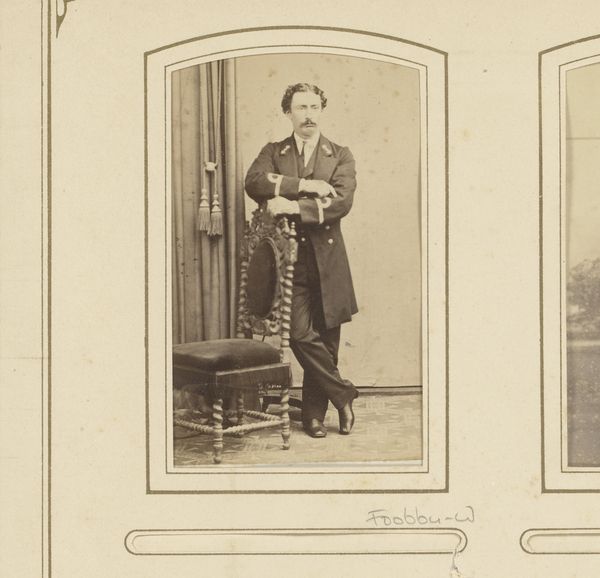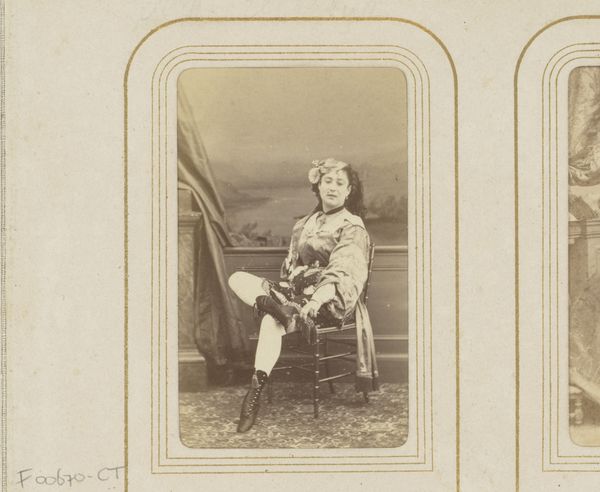
Dimensions: 20.0 x 23.2 cm (7 7/8 x 9 1/8 in.)
Copyright: Public Domain
Editor: We’re looking at “Prince Lobkowitz,” a photograph dating back to 1858 by André-Adolphe-Eugène Disdéri, currently held at the Met. It's a fascinating sheet of multiple exposures... almost a stop-motion study of the same individual. What can you tell me about it? Curator: This photograph provides a fascinating insight into the performance of social identity in the 19th century. The carte-de-visite, as this format was known, was incredibly popular. It democratized portraiture, allowing even the middle classes to possess images of themselves and their loved ones. But the repeated image of Prince Lobkowitz invites us to think about how identity itself was being constructed and presented for public consumption. Notice how the poses shift from the formally posed to the seemingly candid. Editor: So, this was about constructing a public persona? Was it meant for private viewing, or were these cards displayed publicly? Curator: Absolutely. These cartes-de-visite were often collected and displayed in albums, effectively creating a visual network of social connections. Displaying this likeness in such a manner wasn't just about capturing a person’s appearance, but also about broadcasting their social standing, wealth, and affiliations. Consider the implications of the final panel: the lack of any sartorial representation or clear narrative contrasts markedly with the surrounding images. Editor: That's intriguing. The shift is… jarring. Is it poking fun at the performative nature of the earlier portraits? Curator: That's certainly one way to read it! The politics of imagery at the time were deeply rooted in class and status. What we might interpret as humor now could have also served as a subtle critique of aristocracy and its inherent privilege. The artist's position and intentions remain ambiguous, allowing space for interpretation. Editor: It’s incredible how much social commentary can be packed into a seemingly simple portrait. I’ll definitely be looking at photography differently now! Curator: Precisely! Understanding the historical context and the prevailing social structures helps unlock deeper meanings embedded within the artwork. I learned much as well!
Comments
No comments
Be the first to comment and join the conversation on the ultimate creative platform.
